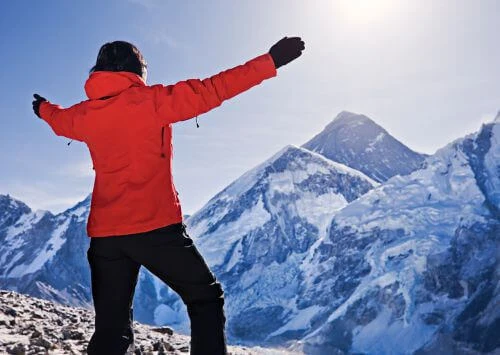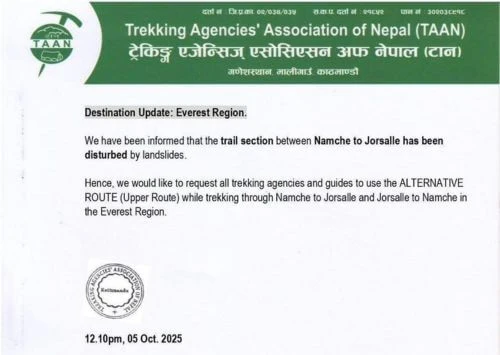The 7 Leave no Trace Principles and how to Follow Them.
As more people spend time outdoors, it is important for us as outdoor lovers to know how to do so properly and with as little negative influence as possible so that the special places where we play will still be there for us to enjoy today and for future generations. The Leave No Trace movement's seven guiding principles to come into play here.
Let's first discuss what Leave No Trace is not before discussing its guiding principles and how we might apply them to reduce our impact when playing outside.
- Rules and regulations are not the focus of Leave No Trace.
- The theme of Leave No Trace is not right and wrong.
- There are shades of gray in Leave No Trace.
Leave No Trace is even more than a list of instructions. It is a set of values, a conviction, a style of thinking, and a manner of living in which we respect our environment (and other people) and act in ways that foster the kind of world we want to live in.
In this post, we cover the 7 principles of Leave No Trace and how to follow them so we can all do our part to keep the places we recreate beautifully.
What is Leave No Trace?
The non-profit Leave No Trace has developed a simple code of ethics and recommended methods for minimizing our environmental effects while hiking, camping, and enjoying outdoor activities. The goal is to lay a foundation of respect for our natural areas so that we can preserve the integrity of the landscape that we enjoy exploring.
The seven Leave No Trace principles serve as a guide for making sensible choices while we are outside so that future generations can continue to enjoy exploring natural and healthy places.
The 7 Principles of Leave No Trace.
The non-profit Leave No Trace has developed a simple code of ethics and recommended methods for minimizing our environmental effects while hiking, camping, and enjoying outdoor activities. The goal is to lay a foundation of respect for our natural areas so that we can preserve the integrity of the landscape that we enjoy exploring.
The seven Leave No Trace principles serve as a guide for making sensible choices while we are outside so that future generations can continue to enjoy exploring natural and healthy places.
Plan ahead and Prepare.
The first principle of Leave No Trace is to plan ahead and prepare. This will not only make your trip more enjoyable, comfortable, and safe but will also help prevent damage to natural resources.
Here are some tips to help you plan ahead and prepare for your adventures:
- Prepare ahead of time by doing your research; depending on your trip, this could take 30 minutes or many months.
- Recognize the rules. For instance, are fires permitted, is a permit needed, what wildlife inhabits the region, is food storage bearproof required, etc.?
- In order to pack appropriately and prepare for the weather, check the forecast. Be ready for unexpected and severe weather.
- Have a strategy in place in case someone gets harmed or gets lost, and be mindful of dangers like flash floods in the desert.
- Plan your journey for off-peak hours. Nobody enjoys standing in line to go outside.
- Repackage your meals to reduce waste when you're traveling. Keep the cardboard box containing your sachets of oats at home.
- Make sure you have everything you need to enjoy yourself safely. Always tell someone where you're going, when you expect to return, and what to do in case you don't.
Travel and Camp on Durable Surfaces.
The usual norm is to stay on the route or campsite if one is there. Try not to establish a trail or campsite if one doesn't already present. The Leave No Trace philosophy aims to prevent us from trampling plants and communities of microorganisms, such as those that dwell on cryptobiotic soil, as well as from leaving new scars on unspoiled places.
In Popular Areas.
Concentrate use on existing trails and campsites.
Stay on the trail – no cutting switchbacks! Walk right through that mud puddle in the middle of the trail – that’s why you wore hiking boots, get dirty!
In Pristine Areas.
- Disperse use so that you are not creating trails or sites where one did not previously exist.
- Stick to durable surfaces like rock, sand, gravel, and dry grasses
- Avoid fragile surfaces like vegetation and riparian zones (that’s the area near a water source).
- Avoid places where impacts are just beginning.
- When you leave, it should look as if you were never there!
- Protect water sources by camping 70 big steps away from water.
Dispose of Waste Properly.
We want to leave places as good or better than we found them and a big part of this is packing out all of our trash along with any that we find along the way.
Pack it in Pack it out
- This means pack out everything including food scraps, apple cores, orange peels, toilet paper, etc. Although these items biodegrade eventually, it can take a long time for this to occur and in the meantime, they can harm wildlife and detract from the beauty of a place.
Human Waste.
- If there’s a bathroom USE IT. If there’s not, we shouldn’t just poop anywhere we’d like.
- If you need to poop make sure to go 70 big steps away from water, trails, and camp – then dig a hole.
How to poop in the woods according to Leave No Trace guidelines.
- Find a place that has nice rich soil, your cathole should be 6-8 inches deep. This allows the microbiotic activity in the soil to break down your waste.
- When finished, fill your cathole in with the dirt you took out. Pack out your toilet paper and ALL feminine products. We like to use doggy bags or a Ziploc bag covered in duct tape so you don’t have to look at your poopy TP.
- Be aware of areas with special regulations, like the Whitney Portal and many permitted rivers that require you to not only carry out the TP, but also the poo in sealable bags that make it easy to pack out and dispose of.
Leave what you Find.
This one is simple. Witness something cool? Take a photo, then replace it. Boom! So that the next person can enjoy it as well, leave anything you find behind. In certain regions, removing natural items is actually prohibited.
We are also reminded to leave places as we found them by this Leave No Trace philosophy (or better). Reduce site modifications and plant damage when establishing up camp.
Here are some pointers to lessen your impact:
- Never collect wildflowers. Future seasons depend on the seeds, and if everyone took a few blooms home with them on each trip, the overall effect would be significant.
- Avoid gathering pebbles, shells, or other natural objects. Let things be instead, and take pleasure in them as they are.
- Don’t cut branches off of trees, hack into them, or hammer nails into them to hang things.
- Don’t carve your initials into trees or draw on rocks.
Minimize Campfire impacts.
Let's also keep this straightforward. It's time to curl up with your s'mores and ghost stories around a toasty fire if there is a designated fire pit and no fire ban in place. If this isn't possible, use a small stove to cook your food so that you can connect with the natural light of the sky and your surroundings.
Here are some suggestions for a campfire that has little effect:
- In an existing fire ring, construct your fire.
- Use only scraps from dead and downed trees when gathering wood from a large region. Where there is little wood, avoid gathering it and starting a fire.
- Only start a fire if you believe you have the necessary skills to control it after making an assessment of the situation.
- Never leave a fire unattended and keep it under control.
- When you're through, totally extinguish your fire using water.
- Keep your rubbish out of the fire so the next camper won't find it.
- In locations where fires are permitted but there are no existing fire rings, use a fire pan like this packable fire pit.
Respect Wildlife.
You’re in their home so give ’em a break. Observe wildlife from a safe distance and don’t disturb them by trying to get closer for a pic. Let them do their thing in peace.
Here are some tips to be respectful of wildlife:
- Don’t touch wildlife. Some animals can harbor rabies or other diseases, and it’s possible that if you touch young animals they may be abandoned by their parents.
- Never feed wildlife! It is unhealthy and is a rabbit hole to bad habits and negative interactions with humans.
- Store your food and trash safely. If you are in the bear country read this: Being Safe in Bear Country
- Easy with the dogs. Keep your dog under control and don’t let them bother or chase the wildlife.
- Camp at least 200 feet from water sources so animals have plenty of space to access.
Be Considerate of Other Visitors.
You should know this one from your mom or kindergarten – it’s the Golden Rule! Think about how your actions affect those around you and be considerate. Most people go out in nature to find peace so keep that in mind and be respectful.
Here are some tips to keep in mind:
- Keep excessive noise to a minimum.
- Everyone loves music but not everyone loves your music. Sound travels far, so if you must play music, ensure that the volume of your tunes is kept to a minimum so your neighbors can’t hear it.
- If you like to use earbuds to listen to music, keep the volume at a level where you can hear what’s going on around you in case
- People tend to get outside to get away from people so the more we can be out of sight and out of the sound of people makes it more enjoyable is for everyone.
- If you’re looking for peace and quiet, head out early in the day before the crowds and avoid planning trips in the high season or on busy weekends.
- Know proper hiking etiquette, such as when to allow people to pass and who has the right of way.
- Keep your pets under your control at all times and pick them up after them.





